2012-05-25
Spanishgrass or Syd Barrett's lost Spanish record


I can personally testify that Pink Floyd was a mythical band in the mid-Seventies, even in dreary Belgium. During the breaks in the school yard, where we would try to hide the cigarette smoke from the teachers, we invariably discussed serious rock music business, and you couldn't get more serious than Emerson, Lake & Palmer, Yes, Genesis, Van Der Graaff Generator and occasionally Kraftwerk. But the top band on the mythological scale was without doubt: the Pink Floyd.
Not only was their band name medieval English for 'pink flute' (in medieval Dutch a flute was written and pronounced 'floite' or 'fluyte') and as such a mild euphemism for a certain male body part we were slightly getting aware of, but it was also rumoured that Pink Floyd was largely a psychedelic drugs-band. They had a mansion on a Greek island where anybody could go on a holiday and get all the sex, drugs and rock'n roll you wanted for free. Which was pretty close to heaven for the 14-years old hormone driving things we were.
France
I guess that every country must have their own local Floydian legends. This blog has already written a couple of times about the French who thought until the mid-Nineties (!) that Pink Floyd was the English for pink flamingo. All this can be traced back to a uni-lingual journalist, Jean-Marie Leduc, who mistook the Pink Flamingo club for the Pink Floyd band, probably in 1967. Another one of this man's silly mistakes was to note down in the Floyd's first biography ever that they had recorded a single called 'Apologies', a Frenglish misunderstanding of 'Apples and Oranges'. A decade later people were still looking for this non-existing track, including yours truly. (More info here: Si les cochons pourraient voler...)
Obviously Syd participates a great deal in these Floydian myths. A very ardent one was the strong belief that there was a third Syd Barrett solo album lying in the vaults of EMI. I still have a vinyl bootleg that promised to be just that although it was quite disappointing when I put it on my turntable.
Spain
But this week, thanks to Babylemonade Flowers, I came across an Iberian Floydian legend about a third Barrett album recorded in a Spanish monastery. It is an urban rock-legend over there (and also in South America) and as far as I know it has never crossed the language barrier. I was totally unaware of it but a few Spanish, Galician (and even Italian) blogs and forums have dedicated some space to it. The following text is an adaptation / translation of what could be found so far and they are presented here as such. Not one single letter has been verified for its authenticity. The copyrights of these texts belong to the original authors (see source listing at the bottom). Translation mistakes, typos and all possible errors are entirely the responsibility of the Holy Church of Iggy the Inuit and/or the Anchor.
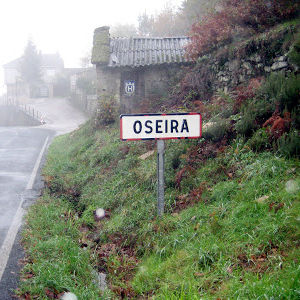
Lunatic on Spanish grass
In 1978 a bootlegger from A Coruña pressed 20 vinyl copies of a tape that was handed over to her by a monk of the Monastery of Santa María la Real of Oseira. The (original) tape in question contained some unreleased Syd Barrett songs, given to the monk by the madcap himself when he stayed there in 1976 or 1977.
The album was titled 'Spanishgrass - veinte canciones sobre el espacio y la siesta'. Apparently that was the explanation Syd Barrett gave when the monk asked him what the songs were about: twenty songs about 'space' and the daily siesta.
Unfortunately Spanishgrass is nowhere to be found. The only edition of the album, limited to 20 copies on the Nonsense Music record label, was a present from Gem Noya to her closest friends. Before they received the record they had to sign a letter promising they would not distribute or duplicate the material. Noya gave the record as a leaving present, before retiring to a Buddhist community in Pokhara (Nepal), where she possibly still resides.
According to sources close to her family, she burned the original (and only) tape and threw the ashes on the beach of Carnota, near the Monte Pindo mountain. In 1983, three of the songs from the Spanishgrass album were exceptionally played on 'El Lado Salvaje' (The Wild Side), a radio show produced by a local FM radio station in A Coruña. (Note: nobody seems to remember the name of that radio station apparently.)
The album's songs are musically innocent, with simple guitar arrangements. Barrett is almost always strumming a single chord, but the lyrics are interesting: ranging from surreal humour on 'Mouse After A Fête' and 'Two bangers + mash' to pentecostal mysticism, with quotations from ancient Welsh bards songs and extracts from Robert Graves' The White Goddess, a work the English musician consulted in the Oseira library.
Another book that influenced Barrett for his song-cycle was Imaginary Lives by Marcel Schwob. Three songs are about characters that can be found in the book: William Phips, Stede Bonnet and Gabriel Spenser. On top of that, Barrett was captivated by the poems of Alvaro Cunqueiro in his book Herba aquí ou acolá and recorded some tracks in Galician: 'Eu son Dagha', 'Na outra banda' and 'Un poeta esquece os días de chuvia'. (Note: it is not explained how Barrett learned to read and speak Galician.)
Although it has not been confirmed and the monks of Oseira keep quiet out of respect for their guests, Barrett met and befriended the British writer Graham Greene, a regular visitor of the monastery from the early seventies until his death in 1991.
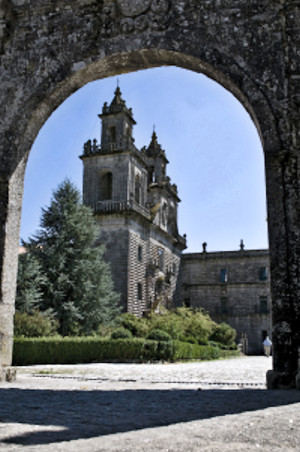
The madcap trails
It is believed Barrett went to Spain for two consecutive years (1976 and 1977). He travelled anonymously, often hitch-hiking or using public transport through Andalusia, Extremadura and Galicia. He was on his own and his luggage was as scarce as revealing: a backpack, an acoustic guitar and the complete works of William Blake. In one of his travels he discovered what would become his private retreat in the north-west of the Iberian peninsula, the Monastery of Oseira.
Nestled in a solitary canyon at the municipality of San Cristovo de Cea (Ourense), the twelfth century Royal Monastery of Santa Maria de Oseira was the first Spanish monastery of the Cistercian monastic order, founded in 1098 as a radical alternative to the aristocratic order of Cluny. The Cistercians practised Christian friendship, poverty and mythic culture, and retreated from the world, in locations far from roads and towns.
Syd Barrett was immediately fascinated by the charm of the secluded place, the silent evolution of the monastic life and the monks' hospitality. He stayed in one of the monastic guest-cells during four months of 1976 (September-December) and three months in the following year (April to June). He only left the monastery to wander the hills nearby where he liked two places, Chaira, a wide panoramic grassy terrace situated on nearly 1,200 feet high, and Penedo, a ridge shaded by chestnut trees.
In Oseira, Barrett wrote and recorded numerous songs on a cheap cassette player. He sat in the courtyard of the monastery, often at siesta time, and sang softly, accompanied by his guitar, afraid to disturb the monks. The sound of the recording is technically weak, but is appealing from a poetic perspective: his voice is filtered through the wind and the bubbling of the water in the nearby well.
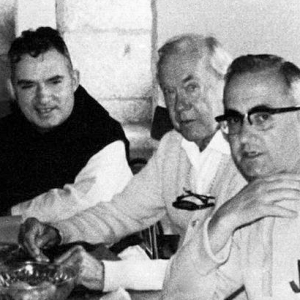
Simone Saibene: an investigation in 2011
In 2011 Simone Saibene decided to investigate this myth and he has published his findings on the Duellanti blog. The underneath text is a (shortened) rendition, the parts were the author just repeats the above story have been omitted:
Some time ago a Carballiño friend told me that this story was not an urban legend as it would seem at first. I was perplexed and intrigued, and after a couple of months I decided to try to find out the truth.
Syd Barrett seems to have spent two holidays in the Cistercian monastery of Oseira (Ourense), the first between September and December of 1976 and the second between April and June, the following year. Influenced by the archaic beauty of the place, Barrett wrote "twenty songs about its location and the siesta". The tracks are yet unreleased and have been recorded in a very rudimentary way.
3 songs from Spanishgrass have been aired in the early eighties by a radio station and those listening that day have declared that the one-chord songs had no arrangements and were not particularly bright.
In contrast, the texts were more interesting, ranging from surrealist humour to mysticism. What you can find on the net is the transcript of the story that circulated in pubs at Carballiño and Ourense in the eighties. It seems an urban myth, but over the last twenty years a couple of journalists of La Voz de Galicia have dealt with the case without finding confirmations but no denials either. I decided to go hunting for information and I headed for Oseira.
The monastery is in a secluded valley, about a three-quarters drive from Ourense. The nearest town in the vicinity is San Cristovo de Cea, famous for its local bread, with just over 2000 inhabitants and about 10 km of the monastery. In an atmosphere that invites contemplation and meditation, I meet a Cistercian monk who is sprinkling the bushes with a hose. I introduce myself and using the excuse of taking a picture, I ask him some questions.
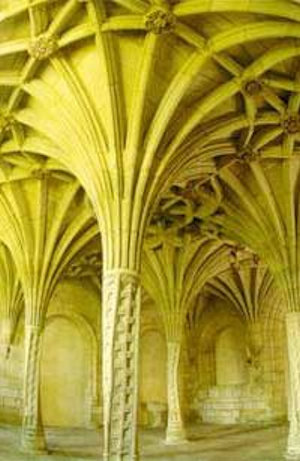
I ask him about celebrities who have visited Oseira in the past. He speaks of the writer Graham Greene and father Leopoldo Durán, author of a doctoral thesis on power and glory, who spend some time together. Another guest of the monks was Eduardo Pérez Maseda, a Spanish composer and essayist. When I ask a direct question about Syd Barrett the monk smiles:
"I remember him. He was a young Englishman, not Catholic, who always had a guitar with him." I ask for other details. "When I met Barrett," he says, "I had only recently entered the community of the Oseira monks. I saw him for the first time when I passed the cell where he was staying. He had left the door open. As I walked through the hallway, I peeked inside.
Syd Barrett sat in front of his desk, he was writing, there were papers scattered everywhere... He did not turn around after my greeting. I guess that he was composing at the time. A few days later, he showed up and told me he was English and a musician.”
I ask the monk if Barrett recorded songs in those days. He replies that he has never witnessed that, but notes that he had no idea who Barrett really was at that time: "A few years later some youngsters arrived at the monastery, asking around... that's when I realized that he was a famous person..." He continues: "None of these fans were Catholic, they took drugs and were convinced that the monastery was a fun place to be, like a nightclub to smoke marijuana. That's not how you act... are you Catholic?"
Before the conversation takes another turn, I ask for permission to use his name for my article. "Absolutely not! I should not even be here talking to you about these things! This is up to the abbot, my superior..."
We greet each other cordially. I continue my visit with the guide who takes tourists (there aren't that many, to be honest) into the monastery. He is a monk of more or less my age. At the end of the visit I ask him for news about Barrett. He replies: “Yes, there is documentation that proves he stayed here.", but adds that "The monks have stored everything away." They have been forced to deny the reports circulating on the former Pink Floyd member because of the numerous fans who had begun to siege the monastery in the eighties and nineties. Moreover, according to the archives, Barrett may not have been visiting Oseira in the seventies, but in the early eighties. Then he confirms that "...in the monastery there are unreleased recordings of Barrett." I thank the young monk for the information and head back to Ourense.
The day after I still doubt whether this is a legend or not, even if the witnesses that I found seemed to be convincing. Truthful or not, the story is almost unbelievable but still worth of being reported.
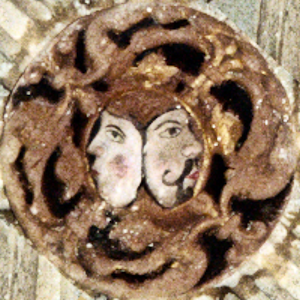
Too much monk's business
Here is a list of alleged tracks (some in Galician) on the Syd Barrett Spanishgrass album. (Note: it has not been revealed where this information comes from).
1 Manantial. (Translation: Spring)
2 Reverential mourners.
3 Black
maid.
4 Plastic gunpowder.
5 Mouse after a fête.
6
Breakwater and tea.
7 Grey tress.
8 Two bangers + mash.
9
Whining at the moon.
10 Greenland.
11 Eu son Dhaga. (Translation:
I am Dhaga)
12 Na outra banda. (Translation: On the other hand)
13
Un poeta esquece os días de chuvia. (Translation: A poet forgets the
rainy days)
14 Saturnalia.
15
William Phips.
16 Stede Bonnet.
17 Gabriel Spenser.
18 Gospel
at noon.
19 Waste deep.
20 Frog.
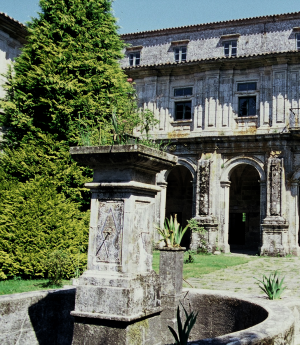
Ramjur: a visit in 2006
On the Infomusic forum Ramjur wrote about his visit to the monastery. Some parts that are merely repeating the above facts have been omitted.
One day in a relaxed talk with Zappamacías (?!) we started about Syd Barrett, who is believed to have had an extraordinary adventure in Spain. This is a personal experience rather than precise information or a review from a a non-existent disk.
In summer 2006 we went on holiday with a couple of families from Malaga to the north of the peninsula: Salamanca, Leon, and Cantabria, Orense, Oseira. We spend three days in a fantastic and huge Cistercian monastery in a wonderful mountainous enclave.
There were about 20 visitors and we got together for lunch and – for those willing to join - religious services. This was the only time we could meet with the monks. Among the visitors were also some people who were there for religious or meditating reasons. During the meal I got into conversation with a priest on the most diverse issues, including music. I can't remember all details any more but suddenly he asked: “Do you like Pink Floyd?”
I was amused and I said 'naturally' as I have their records and stuff but his next question was: “Do you know Syd Barrett then?” I stopped eating and looked at him closely. That he knew Pink Floyd was not so strange in itself, he was a man of the world and Pink Floyd are well known after all, but Syd Barrett?
I began to inquire what he knew and talked about Barrett's solo albums, but then he surprised me: “Do you know his record Spanishgrass?” I asked if it was a live bootleg, and he said 'no', these were new songs and some were sung in Galician! (I had to laugh - the monastery wine was really good.)
I told him I was totally unaware of that record. Then he dropped the big one: “Do you know that Syd Barrett was here twice?” From my facial expression he realized that I no longer believed him. I had read somewhere before that there had been rumours of Barrett staying in a Spanish monastery, but all that seemed far-fetched. But he said: “If we meet at the next meal I'll show you an article.”
The next day he showed me an article from a newspaper that told the history of Barrett and his album Spanishgrass, he gave it to me and I have it at home, but I cannot find it! (Note: it has been confirmed to the Anchor that articles have indeed appeared in the Spanish (music) press about this.)
Needless to say that after this nice story (which still doesn't mean it is real) I was very impressed. I noted with some certainty that the monks were quite reserved on the matter of Syd Barrett and the pilgrim who gave me the newspaper article did not know much more (or would not tell me). But one guide showing visitors around that day said that Syd Barrett had been one of the 'distinguished visitors' of the monastery together with Graham Greene.
A Genius At Oseira
We end this post with a 2006 article from the Galician newspaper La Voz de Galicia:
There is a legend that says that Syd Barrett visited the monastery of Oseira after retiring from the music business. The story circulated quietly in Carballiño in the eighties and, to add some extra confirmation, everyone noted that in the bar next to the monastery there was a Pink Floyd album that had been given by Syd Barrett himself to the innkeeper.
So far for the story... that may well be continued in later articles...
The above article is entirely based upon unverified 'facts' or rumours that have been published in Spanish, Galician and Italian articles. Many thanks to: Babylemonade Flowers, Antonio Jesús and the correspondents at the underneath forums and blogs.
Sources (other than the above internet links):
The mother of
all Oseira articles seems to be one that was posted in 2003 by a certain
Eric Burdon, but that has disappeared from the web:
Discos perdidos -
Spanish Grass- Syd Barrett (2003, Eric Burdon, deleted page)
Syd
Barret en Galicia (monasterio de Oseira) @ Ipunkrock (2006, Charlas
Bronson quoting Eric Burdon)
SYD
BARRETT SPANISHGRASS (1979, NONSENSE) @ Plunderphonics (2007, Little
Turtle quoting Eric Burdon)
Spanishgrass:
Syd Barrett in Galizia @ Duellanti (2011, Simone Saibene, Galizia
dentro)
Spanishgrass
el disco "fantasma" de Syd Barrett @ Sinfomusic (2009,
Ramjur)
Oseira
e o xenio @ La Voz de Galicia (2006, Camilo Franco)
The Anchor is the Holy Church of Iggy the Inuit's satirical
division, intended for people with a good heart, but a rather bad
character.
More info: The
Anchor.
Read our legal stuff: Legal
Stuff.

